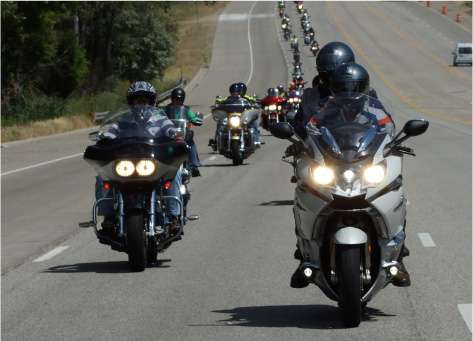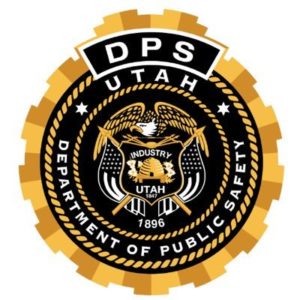RIDING TIPS
“A key element for a good rider would be to have the desire and motivation to choose to reduce risk while riding…A fundamental trait of all good riders is that they have a strategy, a way of thinking and planning to avoid trouble.” -Motorcycle Safety Foundation
key points to safe riding
NEVER ASSUME DRIVERS SEE YOU
Too often drivers don’t see motorcyclists. Do everything you can to be seen. Tips include positioning yourself properly in a lane and avoiding vehicle blindspots, installing auxiliary driving lights, wearing a white or brightly colored helmet and high visibility/fluorescent/reflective safety vest or jacket and if possible avoid riding at dawn, dusk or in poor weather.
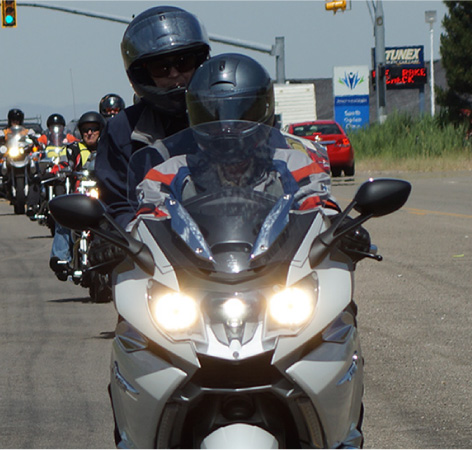
Look where you want to go
In an emergency, do not stare at the guardrail, gravel shoulder or oncoming traffic – chances are you’ll hit whatever you’re looking at (it’s called target fixation). When riding it’s important to keep your head and eyes looking 3 to 4 seconds ahead of you, especially when cornering. You can learn more in a basic or advanced riding course.
Use both brakes
Understand your braking system (linked, integrated, ABS) and use it well. The best way to achieve maximum braking is to apply both brakes fully without locking either wheel. Squeeze the front brake and increase squeezing pressure until you’ve slowed sufficiently. Untrained riders are often afraid to use the front brake. Trained riders know better. Learn how to get the most out of your brakes by taking a basic or advanced riding course.
SPRING AND FALL RIDING
Spring is the time to prepare both your bike and your body before taking your first ride of the season. Never assume you or your bike will react quickly after a long winter break.
Watch the following videos to get you and your bike ready for the season.
Be Seen—Go High Viz
On a motorcycle, you are smaller than other vehicles and therefore difficult to see. You need to do everything possible to help drivers see you. Take control of the situation and make yourself as highly visible as possible. Motorcyclists who are easily seen are in fewer crashes.
TIPS TO STAND OUT IN TRAFFIC
- Wear a fluorescent, reflective safety vest or brightly colored riding jacket—high viz yellow is the new black!
- Wear a white or brightly colored helmet.
- Use a strategic lane position.
- Incorporate reflective materials.
- Install auxiliary driving lights.
- Avoid riding at night, dawn and dusk.
- Avoid riding when the sun is at a low angle.
- Avoid riding in poor weather.
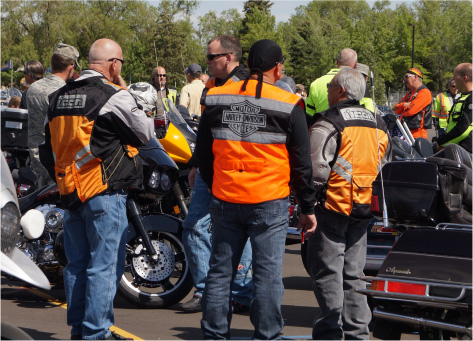
Fear the Deer
Wildlife and free-ranging domestic animals pose a significant threat to motorcycle riders in Utah. Deer often unpredictably cross roads. There’s also a lot of open range area where cattle and sheep (and their associated pies) roam freely, including across roads. For tips on avoiding negative encounters with Utah’s wildlife and domestic stock.
Riding with a Passenger
Carrying a passenger can affect the way a motorcycle handles. The MSF has great info about passengers and cargo here.
RIDING WITH OTHERS
